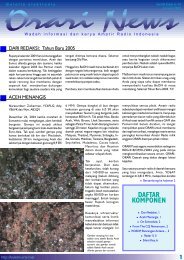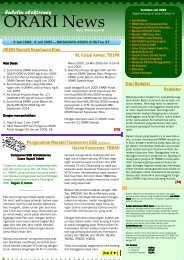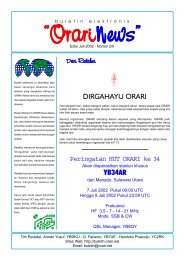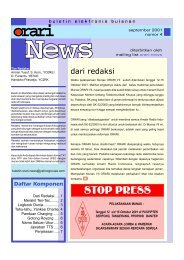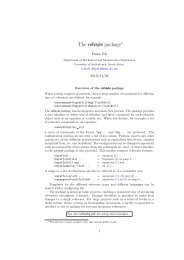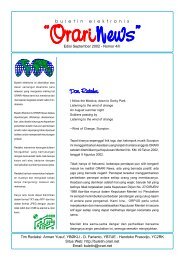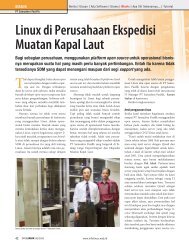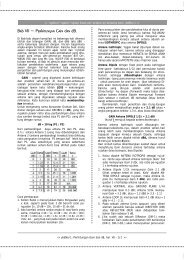You also want an ePaper? Increase the reach of your titles
YUMPU automatically turns print PDFs into web optimized ePapers that Google loves.
maximum power input of 2.2 x 50,000 =.110 kW is chosen. At l0kV,<br />
the maximum d-c anode current is then 11.0 A. This is within the<br />
maximum rated anode current of 15 A for Class AB 1 service as<br />
specified on the data sheet.<br />
For Class AB service the tube does not operate in a cut-off<br />
condition, but rather a certain value of idling anode current exists.<br />
This must be taken into account when choosing Point 1 on the<br />
constant current curve. Generally speaking, high levels of resting<br />
anode current provide reduced levels of intermodulation distortion<br />
products and somewhat lower anode efficiency. Idling anode<br />
current is usually chosen so that anode dissipation under quiescent<br />
conditions is about 50-70% of the maximum dissipation rating. In<br />
the following example, idling anode current is chosen to be 4.5<br />
amperes. From Figure 28, it may be determined that a grid potential<br />
of about -295 volts is required to produce the desired anode current<br />
at the chosen screen and anode potentials. The intersection of the<br />
-295 volt bias line and the 10 kV anode line determines the idling<br />
point on the operating line (Point No. 1).<br />
Figure 28. Constant current characteristics for 4CWI00,000D<br />
tetrode.<br />
Next, the peak value of anode current must be determined, and the<br />
minimum amount of instantaneous anode voltage chosen to pass<br />
this amount of current. Determination of these values will locate<br />
Point No. 2 and will thus define the operating line.<br />
45




